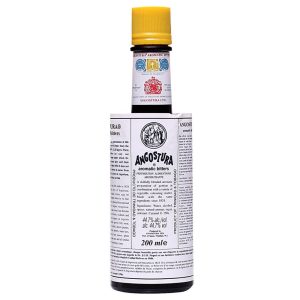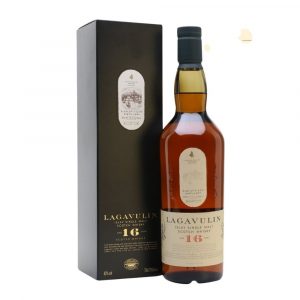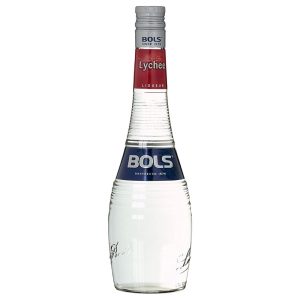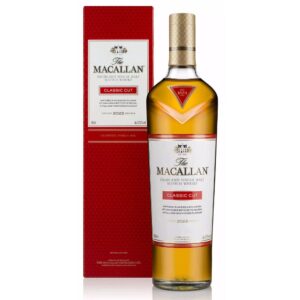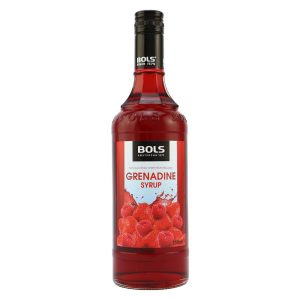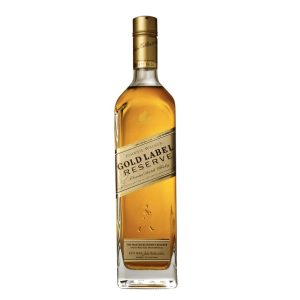Grüner Veltliner wines have been captivating the palates of wine enthusiasts worldwide with their zesty elegance and remarkable versatility. This white wine variety, known for its unique flavour profiles and exceptional food pairing capabilities, has seen a surge in popularity among connoisseurs. The journey of Grüner Veltliner from a local favourite to an internationally acclaimed grape variety is a testament to its enduring appeal and the craftsmanship of Austrian winemakers.
One exemplary producer that embodies the essence of Grüner Veltliner is Landhaus Mayer, offering carefully vinified wines from the best regions in Lower Austria. Managed by Gerhard J. Lobner, Landhaus Mayer focuses on variety and drinkability, showcasing Grüner Veltliner’s diverse expressions and food pairing potential. The vineyards, benefiting from river landscapes and forests, provide the ideal ripening conditions for Grüner Veltliner grapes, resulting in wines of exceptional quality and character. The growing international distribution of Landhaus Mayer wines underscores the global appreciation for Grüner Veltliner and its ability to transcend borders with its distinctive charm and zesty allure.
Grüner Veltliner’s historical roots can be traced back to the Roman era, originating in the picturesque village of Vöcklabruck in Austria’s Danube Valley. The grape’s name, translating to “Green Veltliner,” pays homage to the greenish-yellow hue of its grapes, reflecting its unique appearance and characteristics. Over the centuries, Grüner Veltliner has evolved from a regional gem to a flagship white wine grape in Austria, symbolizing the country’s winemaking traditions and commitment to excellence. The international acclaim garnered by Grüner Veltliner underscores its significance in the world of wine, solidifying its position as a beloved varietal among discerning wine enthusiasts.

Origin and History of Grüner Veltliner Wines
Grüner Veltliner’s journey through history is a tapestry of tradition, innovation, and resilience. The grape’s origins in the Roman-era village of Vöcklabruck speak to its deep-rooted connection to Austrian winemaking heritage and the enduring legacy it has carved over centuries. As a key player in Austria’s viticultural narrative, Grüner Veltliner has transitioned from a local grape variety to a global wine icon, showcasing its adaptability and versatility in different winemaking contexts.
The exploration of Grüner Veltliner’s historical significance unveils a story of craftsmanship and dedication passed down through generations of winemakers. By delving into the archives of esteemed producers like Paul Direder in Wagram, known for his Löss wines, one can witness the meticulous artistry and passion that go into crafting Grüner Veltliner wines of exceptional quality. The evolution of Grüner Veltliner from a humble grape to a celebrated varietal is a testament to the unwavering commitment of Austrian winemakers to preserve their winemaking traditions and elevate the status of Grüner Veltliner on the global stage.
Characteristics of Grüner Veltliner Grapes and Wines
Grüner Veltliner grapes are renowned for their robust nature, with a natural resistance to frost and diseases that make them a reliable choice for cultivation in cool-climate regions. The vineyards of Weingut Weszeli in Langenlois exemplify the grape’s adaptability to different terroirs, showcasing Grüner Veltliner’s ability to thrive in diverse soil types and microclimates. This resilience not only ensures a consistent harvest but also contributes to the grape’s reputation for producing wines of exceptional quality and character.
Furthermore, the thick skins of Grüner Veltliner grapes play a vital role in shaping the wine’s flavour profile and ageing potential. Winemakers at Weingut Prager in the Wachau region harness the grape’s skin contact to extract nuanced flavours, resulting in Grüner Veltliner Smaragd wines known for their complexity and depth. The grape’s unoaked nature, as seen in wines from Lenz Moser, allows the purity of Grüner Veltliner’s aromatics and natural acidity to shine through, creating wines that are vibrant, expressive, and true to the grape’s essence. This interplay of grape characteristics and winemaking techniques is at the heart of Grüner Veltliner’s allure and enduring popularity among wine enthusiasts worldwide.
Grüner Veltliner’s versatility in food pairings extends far beyond traditional matches, offering a world of culinary exploration and innovation. The wine’s high acidity and mineral character make it a perfect companion for dishes like Wiener Schnitzel and Tafelspitz, enhancing the flavours of these Austrian classics with its vibrant acidity and zesty notes. When paired with Asian cuisines like sushi, Thai curries, and Vietnamese spring rolls, Grüner Veltliner’s crisp acidity and subtle peppery finish create delightful contrasts and harmonious flavour combinations, showcasing the grape’s adaptability to a wide range of global flavours.
Moreover, Grüner Veltliner’s affinity for vegetarian dishes opens up a realm of possibilities for plant-based food pairings. Imagine enjoying a glass of Domaine Wachau Grüner Veltliner alongside a herb-infused salad, where the wine’s mineral character enhances the herbal nuances of the dish, creating a symphony of flavours on the palate. The wine’s refreshing acidity and citrus notes also elevate the flavours of roasted vegetables, adding a bright and lively dimension to the dish. Grüner Veltliner’s versatility in food pairings makes it a go-to choice for chefs and home cooks alike, offering endless opportunities to explore new taste sensations and culinary delights.

Notable Grüner Veltliner Wine Regions in Austria
Austria’s winemaking landscape is dotted with notable regions known for producing exceptional Grüner Veltliner wines that showcase the diverse terroir and winemaking styles of the country. The terraced vineyards of Wachau, designated as a UNESCO World Heritage Site, are a prime example of Austria’s winemaking heritage and commitment to quality. Here, producers like Weingut Prager craft Grüner Veltliner wines that reflect the region’s unique terroir, with a focus on purity, precision, and complexity in every bottle.
In Kremstal, the combination of loess soils and a cool climate creates the ideal conditions for Grüner Veltliner grapes to thrive, resulting in wines with vibrant acidity, citrus notes, and distinct minerality. The region’s winemakers, such as Landhaus Mayer, are dedicated to preserving the authenticity of Grüner Veltliner and expressing the nuances of the land in each bottle of wine. Similarly, in Kamptal, the diverse terroir ranging from loess to rocky terraces influences the grape’s expression, giving rise to Grüner Veltliner wines with white pepper aromas, tropical fruit flavours, and a lingering finish. The diverse microclimates of these regions contribute to the spectrum of Grüner Veltliner styles, from crisp and mineral-driven to rich and full-bodied, showcasing the versatility and complexity of Austria’s winemaking traditions.
Popular Grüner Veltliner Brands and Producers
Weingut Prager, a renowned producer in the Wachau region, stands as a shining example of Grüner Veltliner craftsmanship and excellence. The winery’s Grüner Veltliner Smaragd wines, aged in oak barrels, exemplify the depth, complexity, and elegance that Grüner Veltliner wines are known for. The meticulous attention to detail and commitment to quality at Weingut Prager result in wines that reflect the terroir of the Wachau region and the unique character of Grüner Veltliner grapes.
Lenz Moser, another esteemed producer, offers Grüner Veltliner Selection wines that showcase the brand’s dedication to traditional winemaking practices and quality. The wines from Lenz Moser are a testament to the winery’s heritage and expertise in crafting Grüner Veltliner wines that capture the essence of the grape and the region where it is grown. Additionally, Domaine Wachau, a cooperative winery in the Wachau region, produces Grüner Veltliner wines that embody the area’s terroir and winemaking traditions. Each bottle of Domaine Wachau Grüner Veltliner tells a story of the land, reflecting the unique characteristics of the region and the craftsmanship of the winemakers who bring the wine to life.
Tasting Notes and Flavor Profiles of Grüner Veltliner Wines
Grüner Veltliner wines offer a sensory journey of vibrant acidity, citrus aromas, and distinctive flavour profiles that set them apart from other white wine varieties. In the Kamptal region, Grüner Veltliner wines are characterised by their lively acidity, notes of white pepper, and a long, mineral finish. These wines, such as the Domæne Gobelsburg Grüner Veltliner, exemplify the grape’s versatility and complexity, with a focus on freshness and elegance that captivates the palate.
Moreover, Grüner Veltliner wines often exhibit pronounced citrus aromas, with hints of grapefruit, lime, and green apple on the palate. The wines from producers like Weingut Weszeli in Langenlois showcase the grape’s vibrant fruit notes, intertwined with a refreshing acidity and a subtle mineral undertone. The signature peppery finish of Grüner Veltliner wines is a distinguishing feature that sets them apart from other white wine varieties, adding a unique and memorable element to the tasting experience. The interplay of fruit, acidity, and minerality in Grüner Veltliner wines creates a harmonious balance that delights wine enthusiasts and connoisseurs alike.
Grüner Veltliner Vineyards and Terroir
Grüner Veltliner’s ability to thrive in diverse soil types and microclimates is a testament to its adaptability and the unique character it imparts to wines. For example, in the Kamptal region, Grüner Veltliner vines flourish in loess soils, which contribute to the wines’ mineral-driven profile and distinct aromatics. The terroir of Kamptal, with its rocky terraces and varied elevations, adds complexity and depth to Grüner Veltliner wines, creating a rich tapestry of flavours and textures.
Additionally, sustainable vineyard practices play a vital role in maintaining the health and vitality of Grüner Veltliner vineyards. By embracing organic and biodynamic farming methods, producers like Landhaus Mayer in Lower Austria prioritise soil health and biodiversity, ensuring the long-term sustainability of their vineyards. Cover cropping with legumes and grasses not only improves soil fertility but also reduces the need for synthetic fertilisers, enhancing the natural balance of the vineyard ecosystem. These sustainable practices not only benefit the environment but also contribute to the overall quality and expression of Grüner Veltliner wines, reflecting a commitment to responsible winemaking and environmental stewardship.
Sustainability Practices in Grüner Veltliner Production
Sustainability lies at the core of Grüner Veltliner production, with an increasing number of producers embracing eco-friendly farming methods to preserve the environment and promote soil health. The vineyards of Weingut Weszeli in Langenlois are a testament to the winery’s commitment to sustainability and organic viticulture, prioritising the unique nature of the earth and terroir of Kamptal. By focusing on sustainable practices such as water conservation, biodiversity preservation, and carbon footprint reduction, Grüner Veltliner producers aim to create wines that reflect the essence of their vineyards while safeguarding the natural ecosystem.
Furthermore, the implementation of sustainable practices extends beyond the vineyard to the winemaking process itself. Producers like Domaine Wachau in the Wachau region integrate eco-friendly initiatives such as energy-efficient production methods, waste reduction strategies, and packaging innovations to minimise their environmental impact. By adopting a holistic approach to sustainability, Grüner Veltliner producers strive to create wines that not only express the unique terroir of their vineyards but also embody a commitment to environmental responsibility and the preservation of the land for future generations. This dedication to sustainable winemaking practices underscores the industry’s shift towards a more conscious and eco-sensitive approach to wine production.

Grüner Veltliner Food Pairing Trends and Innovations
In recent years, Grüner Veltliner has emerged as a versatile and dynamic wine that lends itself to a wide range of food pairing trends and innovations. The wine’s ability to enhance unconventional pairings, such as spicy Korean BBQ dishes, showcases its adaptability and versatility in complementing diverse flavours and cuisines. Grüner Veltliner’s crisp acidity and peppery finish cut through the richness of the dishes, creating a harmonious balance of tastes and textures that elevate the dining experience to new heights.
Moreover, Grüner Veltliner’s freshness and acidity make it an excellent choice for refreshing summer cocktails and spritzers. By incorporating Grüner Veltliner into cocktail recipes, chefs and mixologists can add a zesty twist to classic drinks, infusing them with the wine’s vibrant character and lively notes. Whether enjoyed on its own or as part of a creative cocktail creation, Grüner Veltliner brings a burst of freshness and sophistication to the drinking experience, appealing to consumers looking for innovative and exciting libations that go beyond traditional wine pairings.
Emerging Grüner Veltliner Wine Regions Outside Austria
The global expansion of Grüner Veltliner beyond its Austrian origins has opened up exciting possibilities for wine enthusiasts to explore the grape’s unique characteristics in new and emerging regions. In New Zealand’s Marlborough region, known for its Sauvignon Blanc, Grüner Veltliner has found a new home, showcasing its adaptability to cool-climate settings and diverse terroir influences. Winemakers in Marlborough are experimenting with Grüner Veltliner to create wines that offer a fresh and vibrant expression of the grape, catering to a growing audience of wine lovers seeking unique and innovative flavours.
Furthermore, in the United States, regions like Oregon and Washington State have embraced Grüner Veltliner, planting vineyards and producing wines that reflect the local terroir and winemaking styles. Oregon’s Willamette Valley and Washington State’s Columbia Valley have become hubs for Grüner Veltliner production, with winemakers exploring the grape’s potential to create new and exciting wine expressions. By infusing Grüner Veltliner with a touch of American ingenuity and craftsmanship, these emerging regions are redefining the perception of Grüner Veltliner and expanding its reach to a diverse range of wine enthusiasts. This global exploration of Grüner Veltliner reflects the grape’s enduring appeal and the universal appreciation for its zesty elegance and distinctive flavour profiles.



